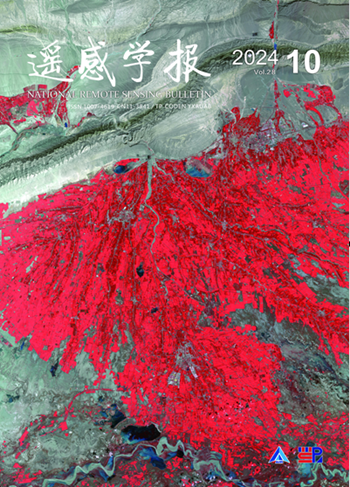Multisensor Remote Sensing Imagery Super-Resolution with Conditional GAN
引用次数: 8
Abstract
Despite the promising performance on benchmark datasets that deep convolutional neural networks have exhibited in single image super-resolution (SISR), there are two underlying limitations to existing methods. First, current supervised learning-based SISR methods for remote sensing satellite imagery do not use paired real sensor data, instead operating on simulated high-resolution (HR) and low-resolution (LR) image-pairs (typically HR images with their bicubic-degraded LR counterparts), which often yield poor performance on real-world LR images. Second, SISR is an ill-posed problem, and the super-resolved image from discriminatively trained networks with lp norm loss is an average of the infinite possible HR images, thus, always has low perceptual quality. Though this issue can be mitigated by generative adversarial network (GAN), it is still hard to search in the whole solution-space and find the best solution. In this paper, we focus on real-world application and introduce a new multisensor dataset for real-world remote sensing satellite imagery super-resolution. In addition, we propose a novel conditional GAN scheme for SISR task which can further reduce the solution-space. Therefore, the super-resolved images have not only high fidelity, but high perceptual quality as well. Extensive experiments demonstrate that networks trained on the introduced dataset can obtain better performances than those trained on simulated data. Additionally, the proposed conditional GAN scheme can achieve better perceptual quality while obtaining comparable fidelity over the state-of-the-art methods.基于条件GAN的多传感器遥感图像超分辨率
尽管深度卷积神经网络在单图像超分辨率(SISR)中在基准数据集上表现出了良好的性能,但现有方法存在两个潜在的局限性。首先,目前用于遥感卫星图像的基于监督学习的SISR方法不使用成对的真实传感器数据,而是在模拟的高分辨率(HR)和低分辨率(LR)图像对上操作(通常是HR图像及其双三次退化LR对应物),这在真实世界的LR图像上通常产生较差的性能。其次,SISR是一个不适定问题,并且来自具有lp范数损失的判别训练网络的超分辨图像是无限可能的HR图像的平均值,因此,总是具有较低的感知质量。尽管生成对抗性网络(GAN)可以缓解这一问题,但仍然很难在整个解决方案空间中进行搜索并找到最佳解决方案。在本文中,我们专注于真实世界的应用,并介绍了一种新的用于真实世界遥感卫星图像超分辨率的多传感器数据集。此外,我们还针对SISR任务提出了一种新的条件GAN方案,该方案可以进一步减少求解空间。因此,超分辨率图像不仅具有高保真度,而且具有高感知质量。大量实验表明,在引入的数据集上训练的网络可以获得比在模拟数据上训练的更好的性能。此外,所提出的条件GAN方案可以实现更好的感知质量,同时获得与最先进的方法相当的保真度。
本文章由计算机程序翻译,如有差异,请以英文原文为准。
求助全文
约1分钟内获得全文
求助全文
来源期刊

遥感学报
Social Sciences-Geography, Planning and Development
CiteScore
3.60
自引率
0.00%
发文量
3200
期刊介绍:
The predecessor of Journal of Remote Sensing is Remote Sensing of Environment, which was founded in 1986. It was born in the beginning of China's remote sensing career and is the first remote sensing journal that has grown up with the development of China's remote sensing career. Since its inception, the Journal of Remote Sensing has published a large number of the latest scientific research results in China and the results of nationally-supported research projects in the light of the priorities and needs of China's remote sensing endeavours at different times, playing a great role in the development of remote sensing science and technology and the cultivation of talents in China, and becoming the most influential academic journal in the field of remote sensing and geographic information science in China.
As the only national comprehensive academic journal in the field of remote sensing in China, Journal of Remote Sensing is dedicated to reporting the research reports, stage-by-stage research briefs and high-level reviews in the field of remote sensing and its related disciplines with international and domestic advanced level. It focuses on new concepts, results and progress in this field. It covers the basic theories of remote sensing, the development of remote sensing technology and the application of remote sensing in the fields of agriculture, forestry, hydrology, geology, mining, oceanography, mapping and other resource and environmental fields as well as in disaster monitoring, research on geographic information systems (GIS), and the integration of remote sensing with GIS and the Global Navigation Satellite System (GNSS) and its applications.
 求助内容:
求助内容: 应助结果提醒方式:
应助结果提醒方式:


